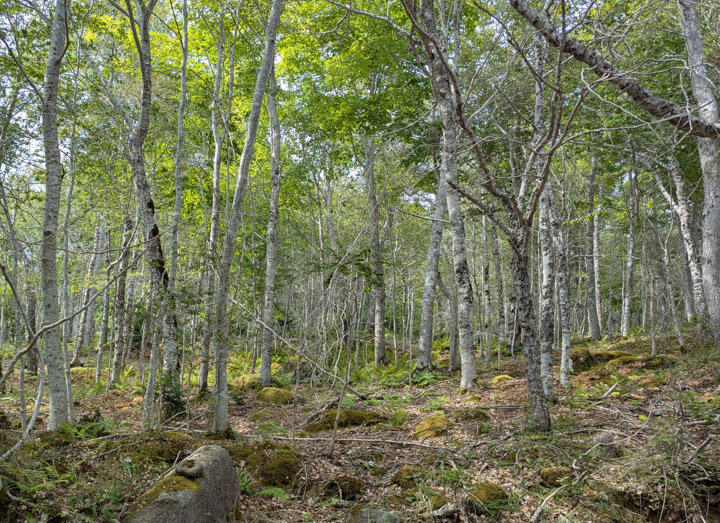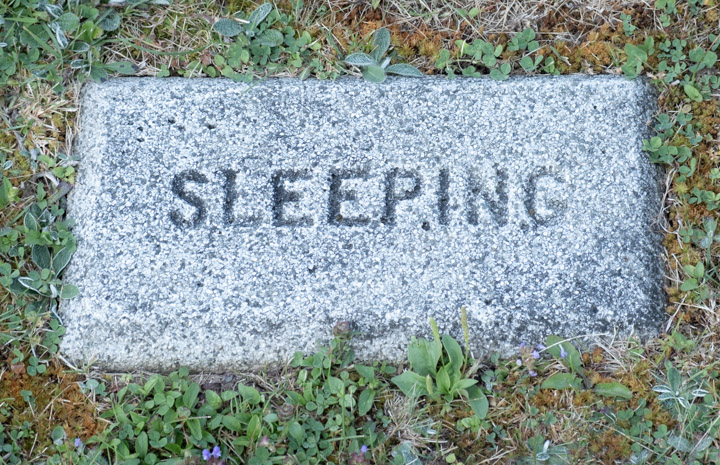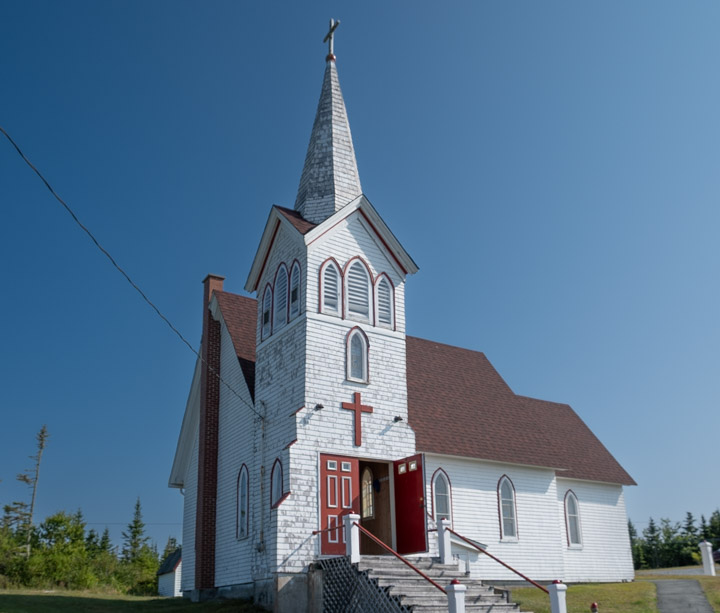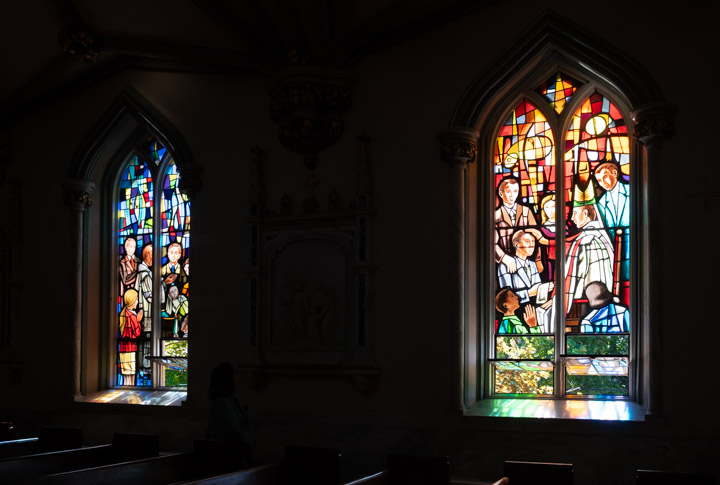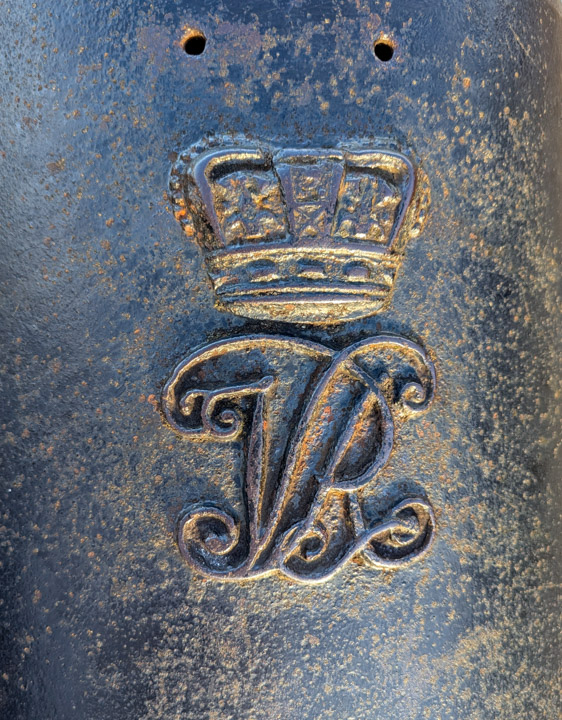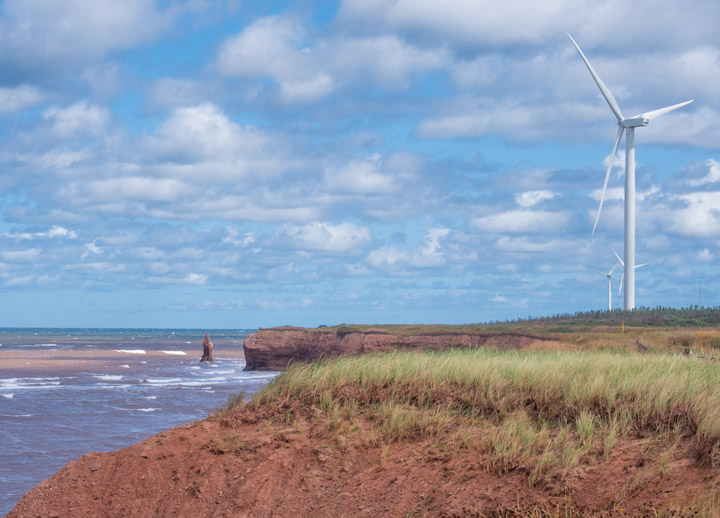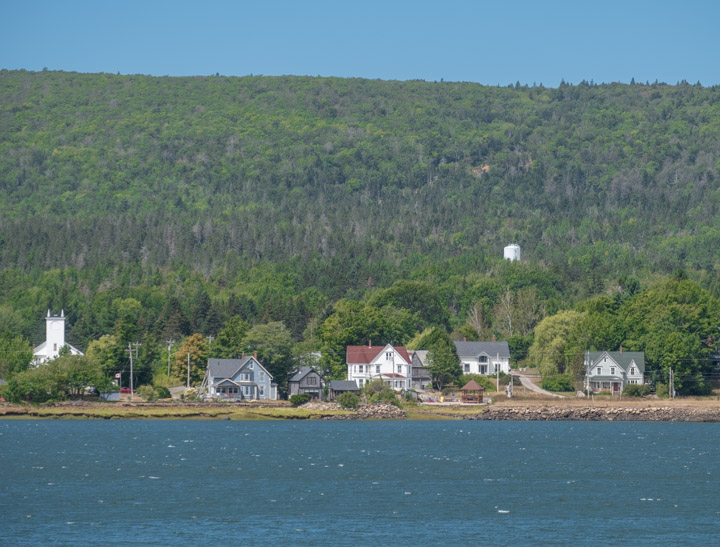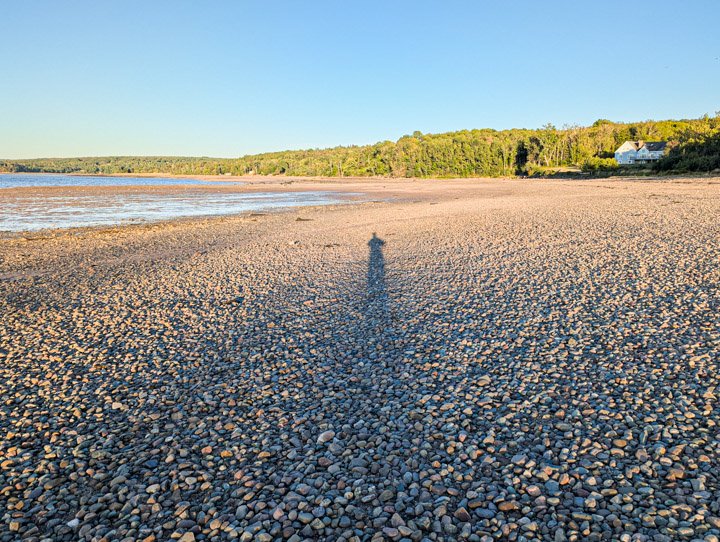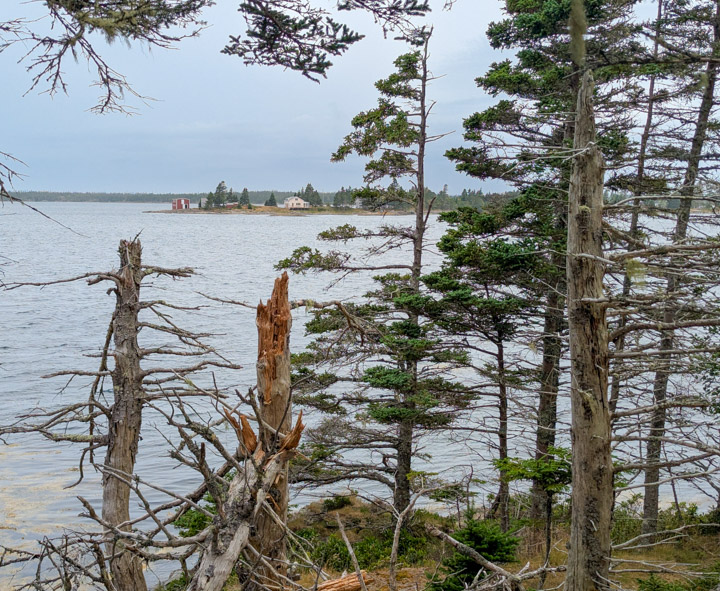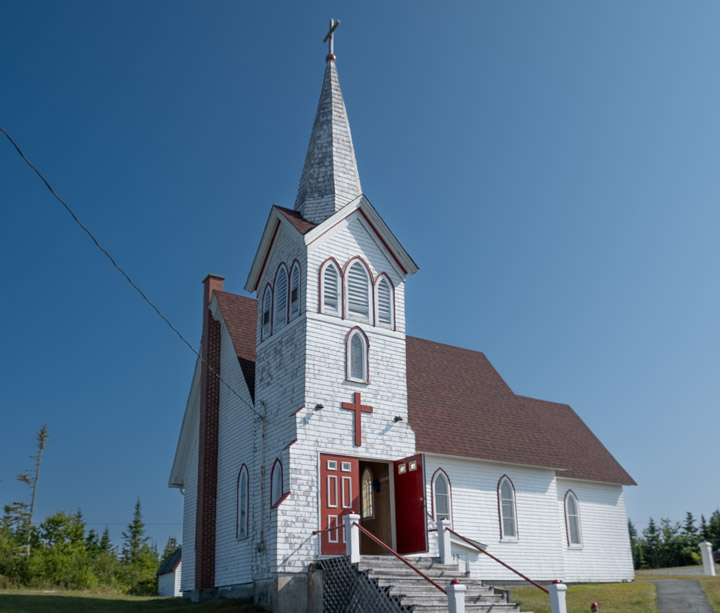
文章描述了作者与友人在加拿大东海岸的旅行经历,包括新斯科舍省、爱德华王子岛等地的森林、教堂、墓地、堡垒和大炮等景观。文中还提及当地历史与文化特色以及气候变化对环境的影响。 2025-8-27 19:0:0 Author: www.tbray.org(查看原文) 阅读量:7 收藏
The sound of the wind surging through birchy Eastern woods isn’t like the same coastal gusts in my own Pacific rain forest; around you not above you, alto not baritone. The colors differ too: Forests, houses, soil, and sea. And everywhere little white churches, each with its cemetery. A scattering of forts, far too many cannons. And everything faces the sea.
Birchy Cape Breton forest.
For the first time since Covid and, more important, since Lauren’s 2½-year battle with Long Covid, we went on the road for pleasure; Lauren and I and our dear friend Sally from Warragul, Australia. To my shame, all my decades’ travel had never taken me to Canada east of Montreal, so we spent a couple of weeks poking around Nova Scotia and Prince Edward Island, plus a bit of New Brunswick. I took many pictures and it’ll take a few blog pieces to share those that I think deserve it.
No part of Canada’s settler culture is old by European or Asian standards, but ten generations of white people lived and died here before the first rough town organized itself near what’s now Vancouver. They had to be buried someplace, thus the graveyards everywhere you go. These were captured near Whycocomagh.
Lillian S. DeWolfe, Oct 1876 Sept 1958.
How long will it still matter that my hometown is one of the world’s youngest big cities?
Many graveyards are church attachments, but many more greet you at a random turn in the road; always framed by forest. The density of churches is remarkable; all built of wood, mostly white, mostly well-kept. This one was attached to the graves above and is untypically faded (but lovely inside).
Some of the churches have become boutiques and breweries, but those that haven’t still occur more densely than in any other New World jurisdiction I’ve seen. Why should faith hold stronger down East?
Another church, St Dunstan’s Basilica in Charlottetown, offered perhaps the most intense experience of the whole trip, because a singer and organist were practicing elaborate hymn treatments. Both were great, the organ is a magnificent Casavant, and parish organist Leo Marchildon was having fun, putting lots of wind through those pipes including the 32’ bass monsters. My ears and I were smiling when we left.
The stained glass is nothing special
but I liked the opened panes at the bottom.
Forts and cannons, I said; the Maritimes’ messy history included repeated captures and recaptures by the forces of France and Britain and the USA, and quite a few of the forts had been put to their intended use, repelling or falling to one invader or another.
The locals, at least the ones who set things up for tourists, seem to take their history seriously; I don’t pretend expertise or even much interest in it, but I have to say that some of the cannons have good typography.
“VR” is Victoria Regina of course,
so sometime in the second half of the 19th
century.
The colors are different, and an entry later in this series will dip in gleefully and offer scope for a bit of camera geekery. One expects changes in houses and vegetation when you travel four timezones away, but nothing prepared me for the shocking soil in Prince Edward Island (hereinafter PEI).
Past Tignish at PEI’s northern extremity,
well off the paved-roads part.
I opened with words about everything facing the sea. Not entirely true, sometimes you’re looking at a lake.
Those kids don’t know how lucky they are.
This is in the wonderful Kejimkujik National Park in central Nova Scotia, mostly closed due to extreme wildfire peril.
All across the Maritimes, drought was in effect; crops failing, forests closed. Which reminds me; near that lake there was a birch-bark-canoe workshop. I asked the guy making the canoe how long it took. He said “My great-grandpa could do it in seven days, because back then there were birch trees big enough that you could make the whole hull out of a single piece.” It’s very difficult to find any aspect of life on earth that isn’t exhibiting Anthropocene damage.
Usually, it’s the sea that you’re looking at.
· · ·
Above, coastline near Annapolis Royal.
Below, low tide near Chipman Brook.
From one end of Canada to the other; to me, the surprise was not so much the difference in the landscapes but the similarity of the people; they spoke my accent, shopped in my stores, obeyed my road signs. More on that later. For now, this.
On Bell Island, among the LaHaves.
如有侵权请联系:admin#unsafe.sh
